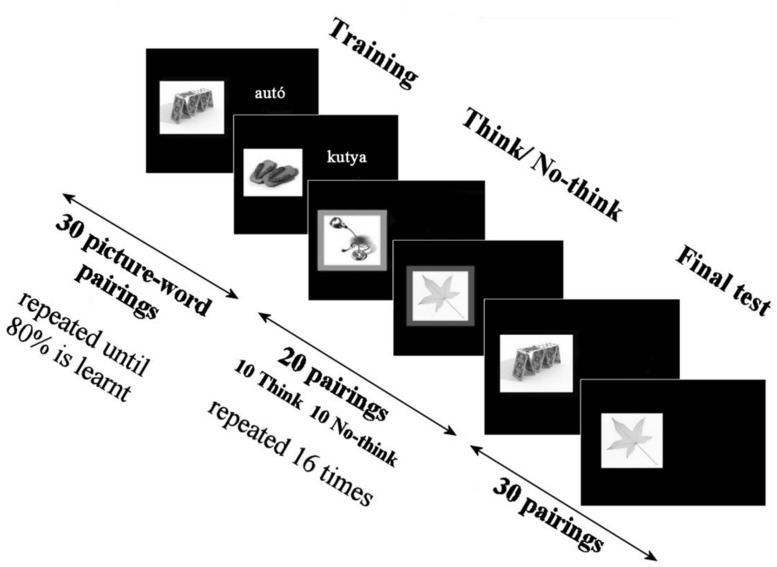FIGURE 1.
The Think/No-think (TNT) paradigm involves the computerized presentation of 30 non-related, neutral picture–word pairs. During each trial a full-colored image and a word were presented simultaneously for a period of 3.5 s. The experimental paradigm included three major phases. During the initial training block participants viewed the 30 image–word pairs. Training blocks consisting of the randomized presentation of all stimulus pairings were repeated until the participant succeeded to correctly identify at least 24 (i.e., 80% of the 30 pairs). Following completion of training all stimulus pairings were randomly classified into three groups (Baseline, Think, and No-think). Subsequently, the cue item was presented only and participants were instructed either to recall, i.e., “think” or suppress, i.e., “not think” of the target stimulus previously paired with the cue. Words previously studied with pictures now surrounded by a green colored frame, i.e., the T items, were asked to be recalled and named. In contrast to this, participants had to try to suppress the words which have been paired with images now presented with a red frame, these were the NT items. The final test consisted of the presentation of all 30 images originally studied.

